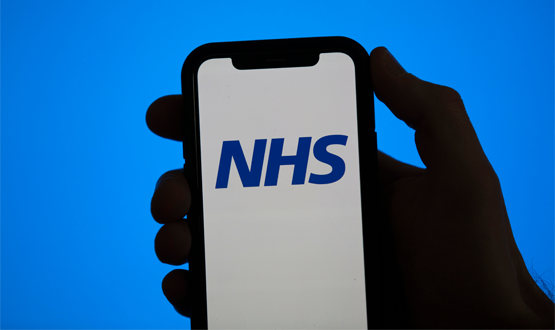Least digitised trusts to get priority for investment
- 17 May 2022

Twenty-five of the least digitally mature NHS trusts are to be prioritised for future investment in electronic patient records (EPRs), Digital Health News has learned. Jon Hoeksma, CEO at Digital Health, delves deeper into the news and possible key issues.
NHS England has briefed trusts that it will prioritise future investment funding to those trusts it judges to not yet have electronic patient record systems.
Some 45 NHS provider trusts are set to be the recipients of national investment to boot-strap them up to a common baseline, as measured against the US-centric HIMSS EMRAM benchmark.
Trusts will be expected to achieve HIMSS Level 5 or above.
Digital Health News understands that English trusts have been divided into four groups. These range from the lowest Group 0 (those trusts deemed to have no electronic patient record) to Group 3 (those trusts with a mature EPR in place, equivalent to HIMSS Level-5).
Some 25 trusts are in group zero and defined as “in business case development”, with a further 20 in group one which are defined as being “in procurement or implementation”.
The largest group of trusts, some 128, are in group two and have “existing EPR needs extension/optimisation to meet required standard”.
A further 40 trusts are in the most mature group 3 which is defined as “existing EPR meets required standard”.
Gaming the system
The new focus on the least digitised trusts has led to concerns that some trusts may game the system, believing that it is in their interest to report they lack a fit for purpose EPR if they think they are more likely to receive national investment.
By choosing HIMSS EMRAM as the benchmark, which is designed around main US EPR vendors, the focus is very much on hospitals and not the rest of the health and care system, which still looks like the poor relation on digital.
Moving away from GDEs
This new approach is said to be personally driven by Dr Tim Ferris, now 12-months in as director of digital transformation at NHS England and Improvement, without much prior consultation or debate. As first reported by Digital Health News in October 2021, Dr Ferris is also said to remain a strong personal advocate of Epic for the NHS, the EPR system used by his former employer Massachusetts General Hospital.
The new approach represents a U-turn from the approach of the past six-years under the Global Digital Exemplar (GDE) programme of targeting investment to the most digitally ready trusts. Though we had already some much smaller tactical investments under the digital aspirant programme that followed GDE, investing £28m in 23 trusts from January 2020.
Based on the recommendations of the 2016 Wachter Review of NHS IT, the GDE programme was based on the premise that just buying systems, as had previously occurred under the NHS National Programme for IT, was of little use unless the organisation was ready for and committed to change.
Under GDE trusts had to demonstrate their leadership and commitment, including making matching investments, upgrading core infrastructure, and to spread learning and skills by being buddied up with Fast Follower organisations.
What about the have-nots?
The big down-side of GDE is that it was a form of trickle-down economics that offered very little to the have-nots, with the policy initiative being pulled before any benefits reached the lower leagues.
Are the least mature ready for change
The obvious risk of targeting the least digitally mature organisations, however, is that they have also shown themselves, over a long time, to be the least able to actually deliver major digital programmes.
Some of the trusts in Group Zero may have failed to locally invest in IT infrastructure, leadership or clinical applications, often over many years. In other cases, digital will not be the only problem these organisations have.
That’s not to say that they don’t need help, they clearly do. Whether it’s being helped to buy shiny new software is open to question.
Support on infrastructure, leadership and above all the hard work of adaptive change and digital transformation are all needed. Buying a new EPR, even one as reassuringly expensive as Epic, is not sufficient in itself, but only useful as part of a wider set of investments and needs needed.
So its encouraging that there are also suggestions that to recieve new funds trusts must be buddied up with neighbours and demonstrate a commitment collaboratively.
Past offers a warning on national deals
Many of the trusts in the bottom group have been serially failed by national initiatives going back to the National Programme for IT, also based on nationally picking an EPR without taking account of local needs.
Trusts in the North and East of England in particular were poorly served by NPfIT and its successors, which hamstrung many for years with sub-standard nationally selected systems.
But whatever the national policy mis-fires of the past, the reality is that some NHS organisations have also failed to take basic steps to help themselves and sufficiently invest in digital over many years.
Unrealistic timetables
Also reminiscent of the heroic phase of NPfIT are the timetables that have been set nationally.
According to Secretary of State for Health and Social Care, Sajid Javid, electronic patient records must be rolled out to 90% of trusts by December 2023 so NHS staff can access all relevant patient information quickly.
This implies 20-30 trusts will need to get new EPRs or significant upgrades in just 18-months. For a digitally immature trust starting from a long way back its simply not realistic.
It’s a target that very few expect to be achieved, yet it may yet provide the impetus to NHS England to cook up a national deal with a supplier like Epic, possibly based on a series of ICS-wide deals.
It’s about digital transformation not the software
Ironically, the very reason that Epic is often seen as a safe bet is that it’s tried and tested implementation methodology and approach is the very thing that makes it ill-suited for breakneck implementations and cut-price national deals.
Epic famously requires customers to make concrete commitments to accompanying major investments in infrastructure – the so-called ‘warranted environment’, change staff and people, that together can be twice the cost of the actual software.
Perhaps the key failing of NPfIT was to think that digitisation of the NHS could be reduced to a procurement exercise. Buying EPR software is just the start of the journey and relatively easy compared to actually successfully implementing it, while reviewing and standardising processes and driving improvements in clinical practice, productivity and patient safety.





3 Comments
I have been looking at NHS IT from outside for over 20 years, and reckoned it was in a pretty bad way, but until Jon Hoeksma’s article, I had not realised just how bad.
To me, a patient, an EPR is the core system of any hospital. According to Jon, 45 trusts (Groups 0 and1) have hardly started. 128 trusts (Group2) are doing EPR, but not very well, and only 40 are adequate.
What have the leaders, hospital managers, IT managers and you, lowly Digital Health readers, been doing for the last 20 years: playing video games or pinning the tail on donkeys?
Please could someone name and shame the Trusts in Groups 0 and 1, so that patients like me should avoid them.
Currently using EPIC as a patient’s parent and it’s truly a life saver. This for Great Ormond Street Hospital / MyGosh. All appointments, records, list of medications and more in one place. Quite essential when you have a 5 months old baby who’s had 2 heart surgeries since being born. Additionally being able to reach your cardiac nursebby messageb and get fast answers to questions is just amazing. No waiting on the phone or for call backs. Looking forward to link the MyFirmleyHealth too.
Pardon the farming tech analogy but it is worrying that when most Health Communities in need of levelling up need a general purpose ICS British-made Ferguson tractor, NHS England seem to be pushing a specialist secondary care US-made John Deere combine harvester!
Why not devolve all this centrist funding to ICS level and let the free market decide – that’s supposed to be this Government’s philosophy, along with decentralising and reducing the size of the civil service.
Discuss 🙂
Comments are closed.